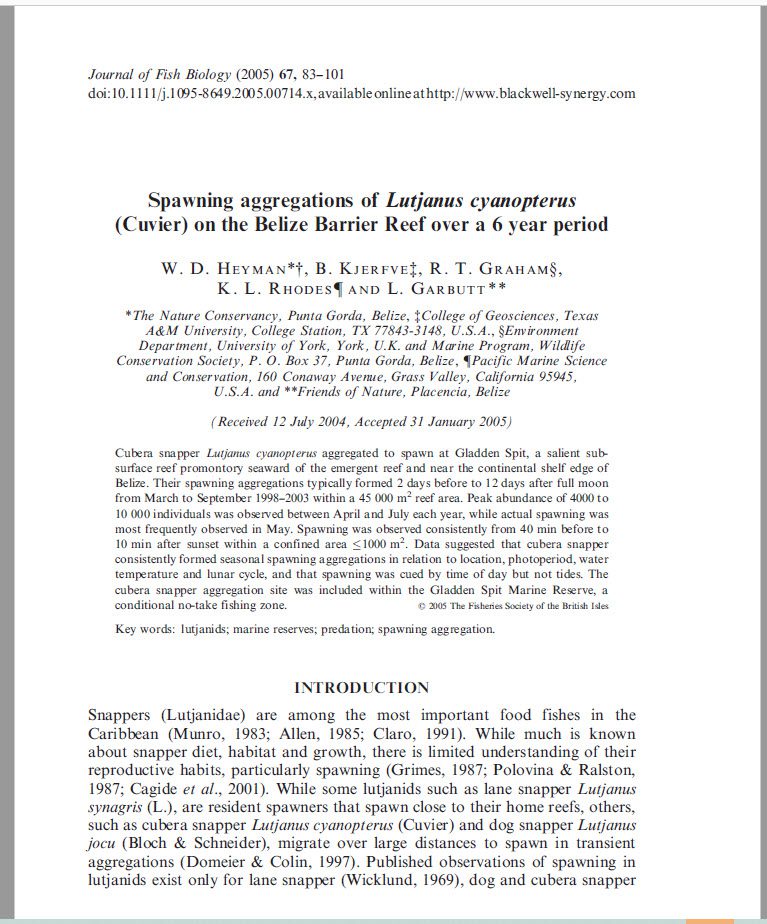Snappers (Lutjanidae) are among the most important food fishes in the Caribbean (Munro, 1983; Allen, 1985; Claro, 1991). While much is known about snapper diet, habitat and growth, there is limited understanding of their reproductive habits, particularly spawning (Grimes, 1987; Polovina & Ralston, 1987; Cagide et al., 2001). While some lutjanids such as lane snapper Lutjanus synagris (L.), are resident spawners that spawn close to their home reefs, others, such as cubera snapper Lutjanus cyanopterus (Cuvier) and dog snapper Lutjanus jocu (Bloch & Schneider), migrate over large distances to spawn in transient aggregations (Domeier & Colin, 1997). Published observations of spawning in lutjanids exist only for lane snapper (Wicklund, 1969), dog and cubera snapper…
W. D. HEYMAN, B. KJERFV, R. T. GRAHAM, K. L. RHODES AND L. GARBUTT

